Abstract
1. Sacs of everted mid-small intestine of the hamster have been used to study the effect of amino acids on sugar absorption.
2. The sugars employed were D-glucose, D-galactose, 3-O-methyl-D-glucose, D-fucose, L-glucose, α-glucoheptose, L-fucose, D-mannose and L-sorbose. The amino acids were L- and D-histidine, L- and D-methionine, L- and D-alanine, L- and D-valine, L- and D-glutamic acid, L-leucine, L-proline, L-ornithine and L-aspartic acid.
3. Actively absorbed amino acids considerably inhibit the transport of actively absorbed sugars. The results give support for the view that D-histidine and L-glucose are actively transferred. Passively absorbed amino acids and sugars are not involved.
4. As L-glutamic and L-aspartic acids in the mucosal fluid have no inhibitory effect on D-glucose absorption, although mucosal fluid L-alanine is quite potent, the step at which the latter exerts its inhibitory action must be before that at which the intracellular transamination of L-glutamic and L-aspartic acids occurs. It would seem likely, therefore, that L-alanine interferes with the process by which epithelial cells capture and concentrate sugars at the luminal border.
5. More than one active transfer system may exist for D-glucose.
6. The influence of actively absorbed L-amino acids on D-glucose active transport seems to be in some way related to the efficiency with which the amino acids are themselves concentrated.
7. Inhibition of D-glucose active absorption by an amino acid may be a simple test of an amino acid's participation in an active transport system.
Full text
PDF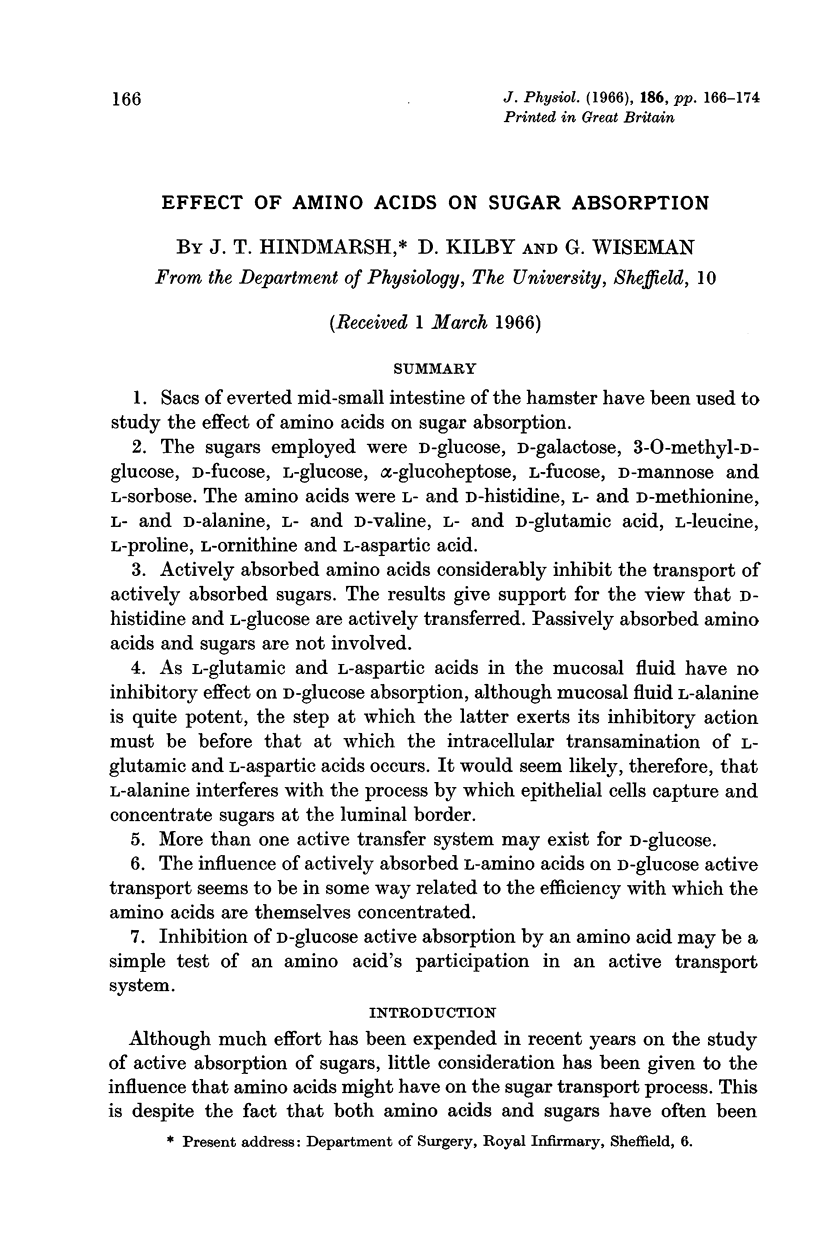

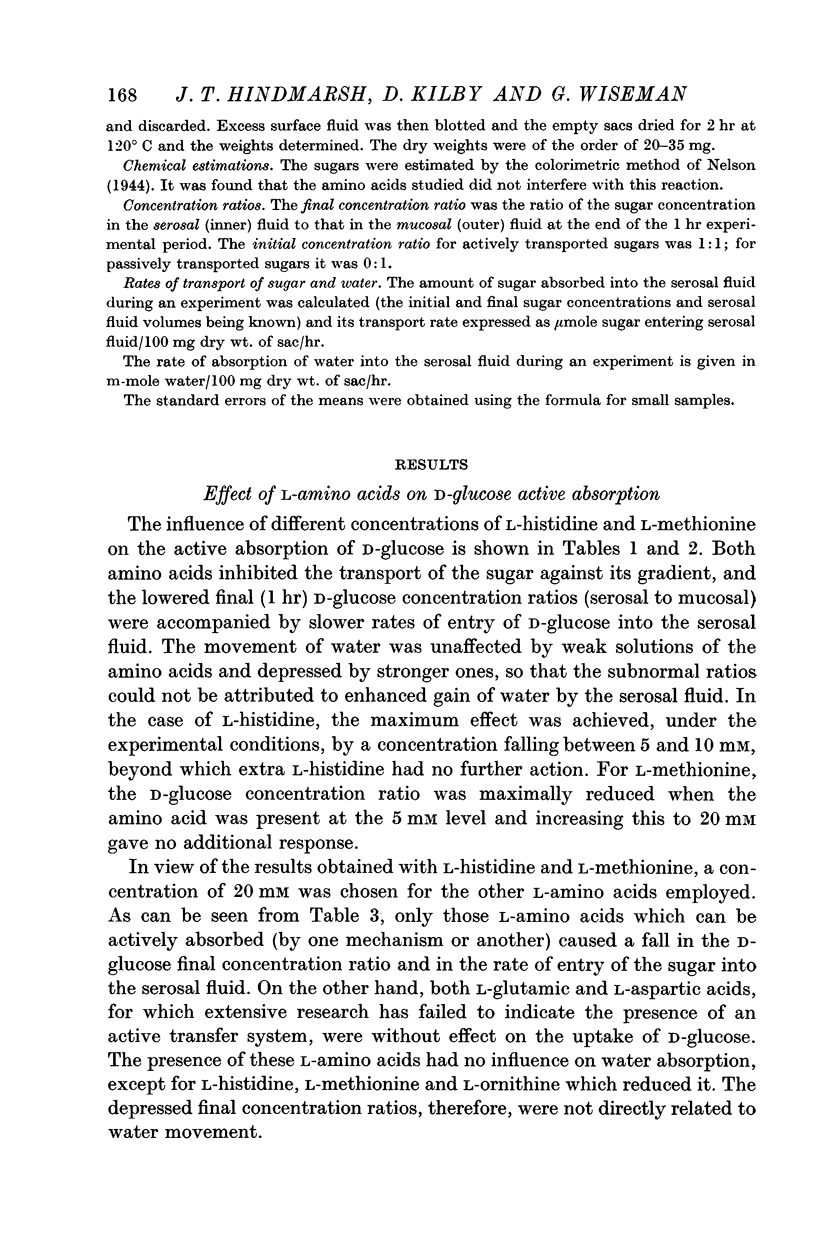
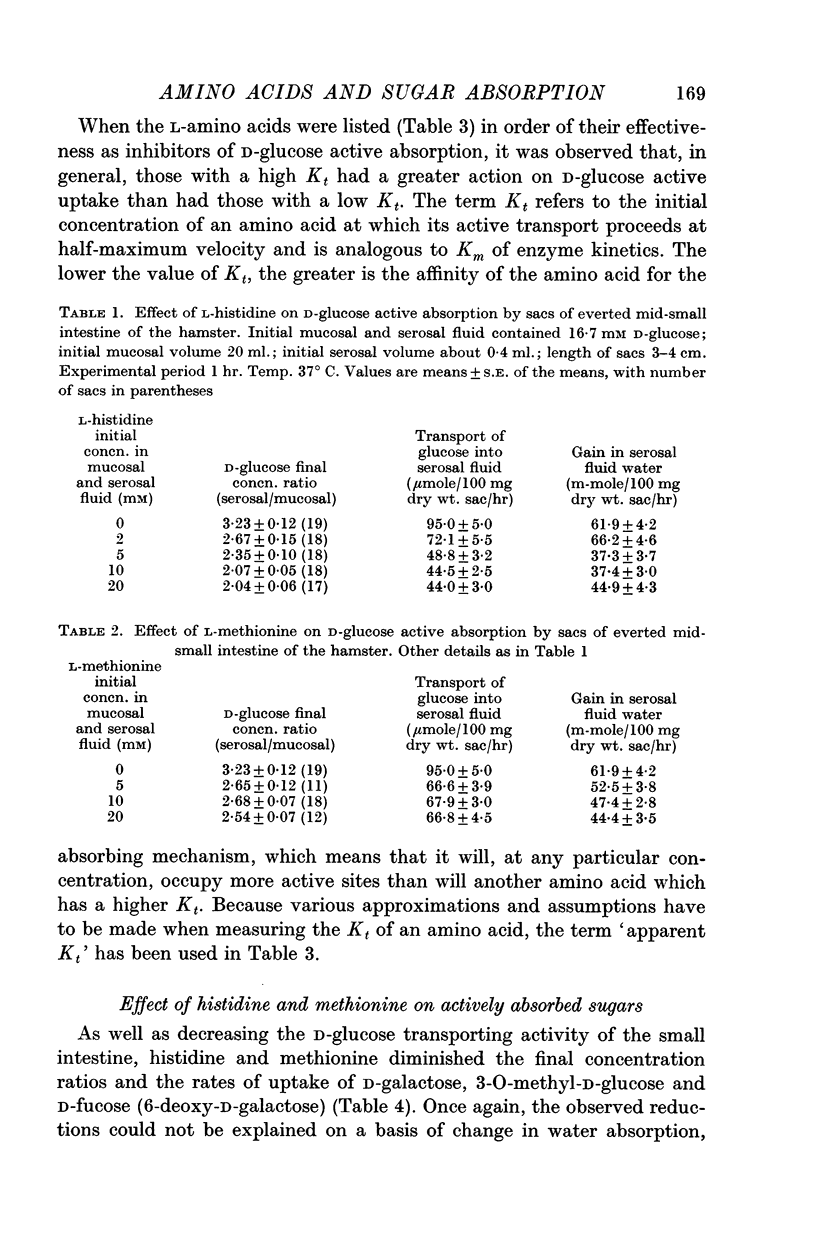
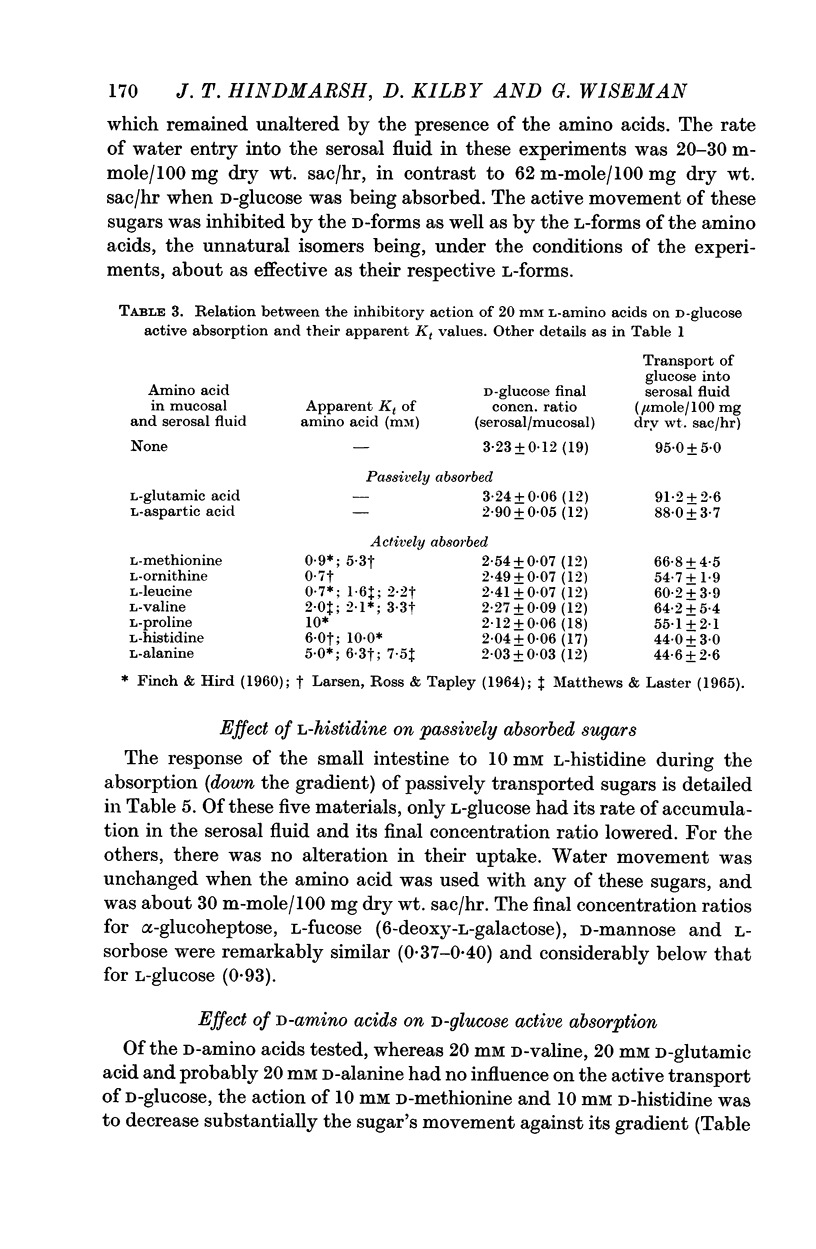
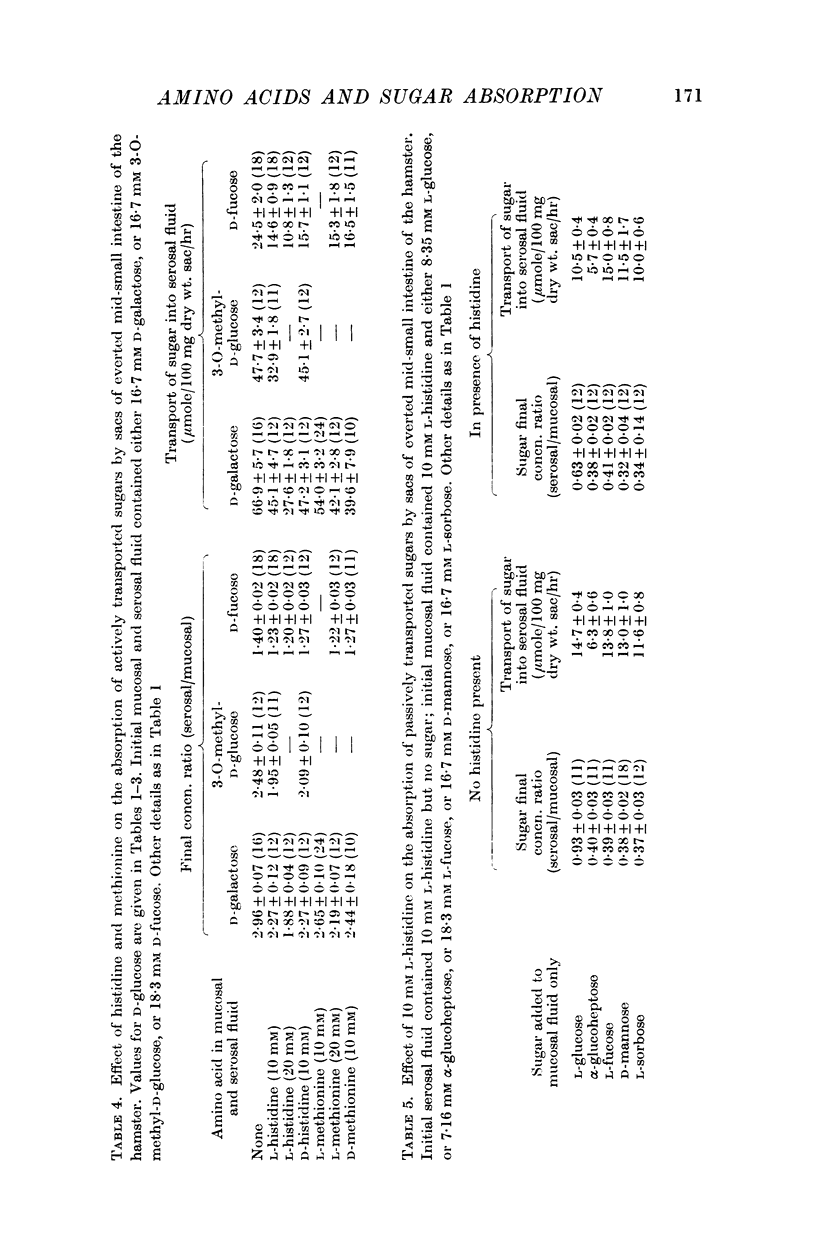
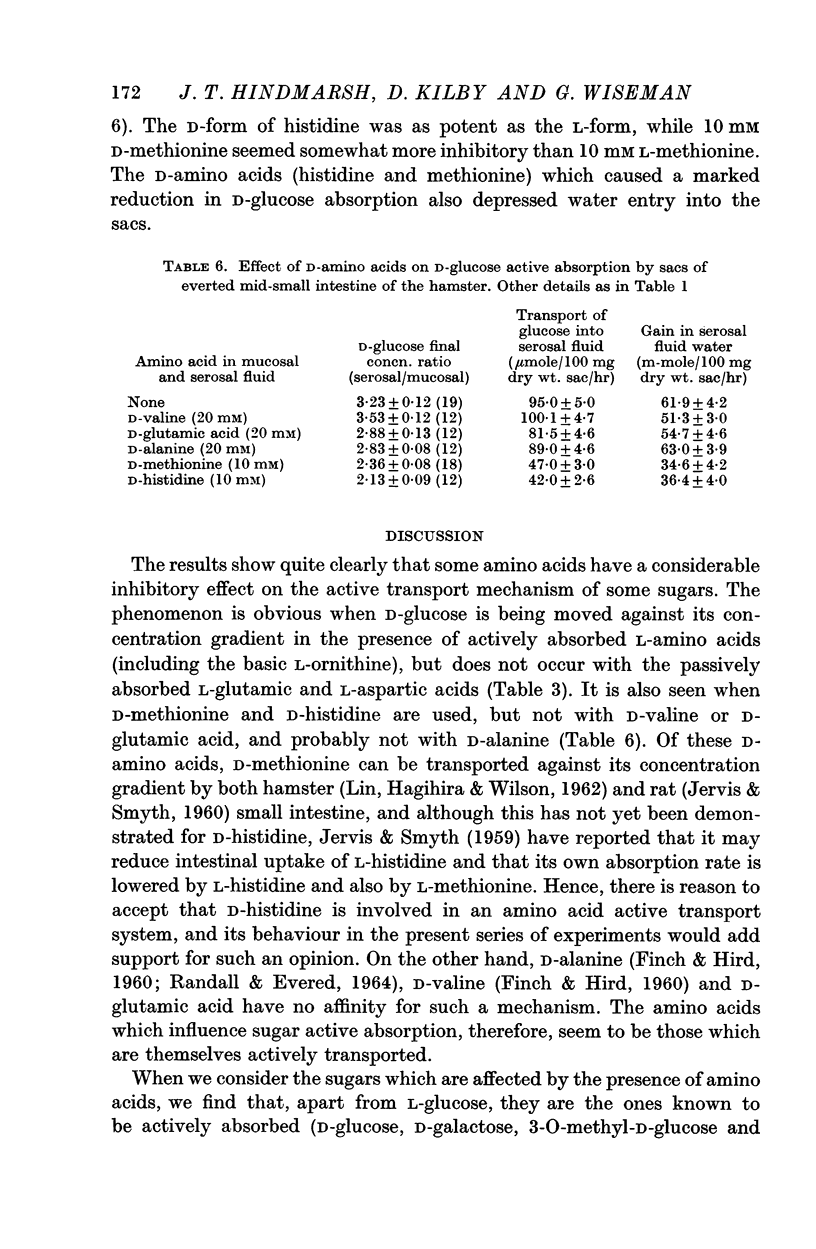
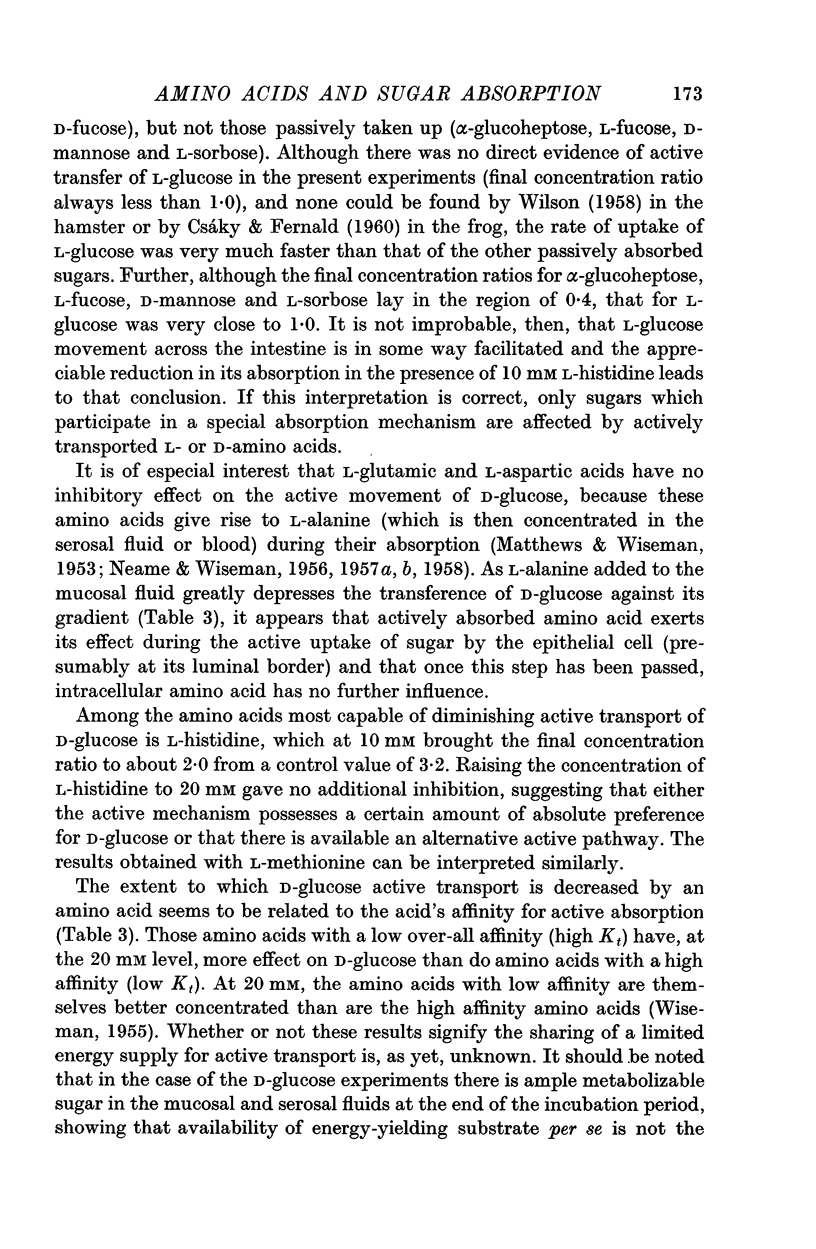
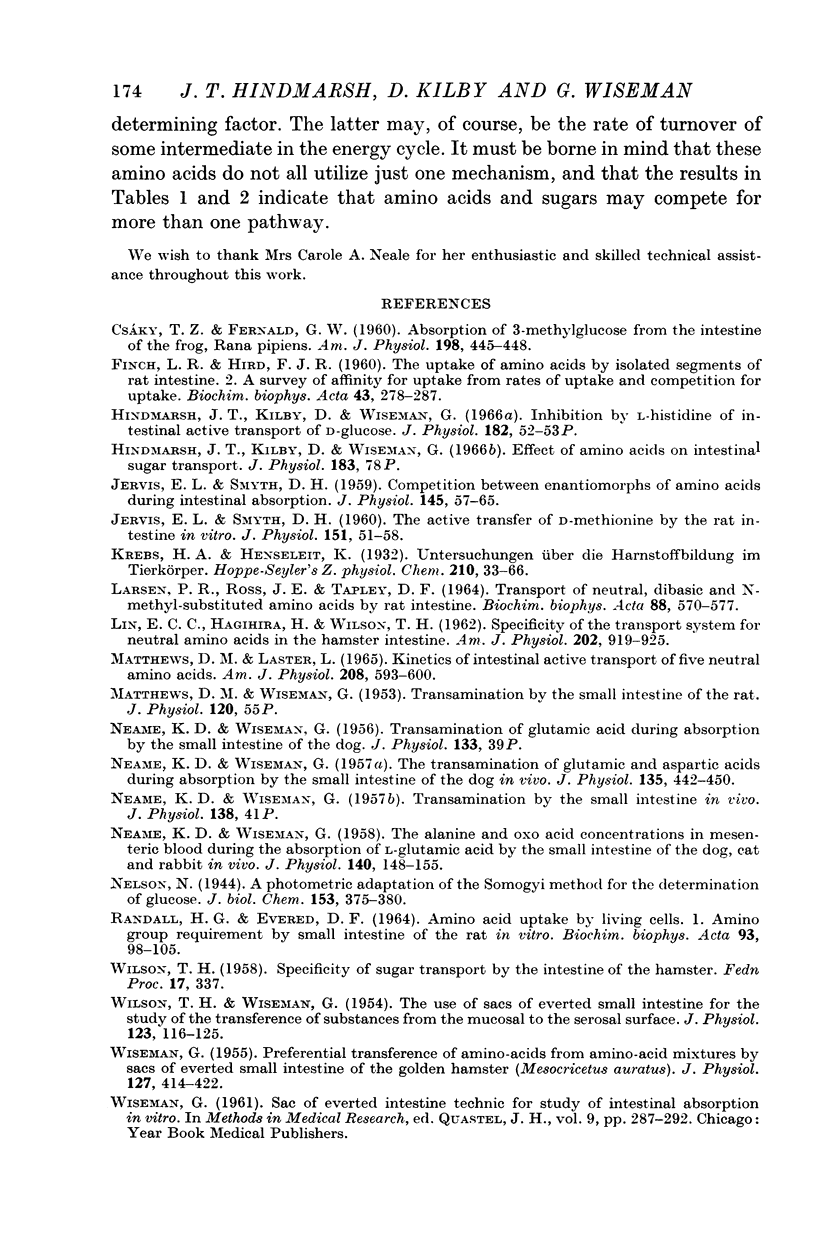
Selected References
These references are in PubMed. This may not be the complete list of references from this article.
- CSAKY T. Z., FERNALD G. W. Absorption of 3-methylglucose from the intestine of the frog, Rana pipiens. Am J Physiol. 1960 Feb;198:445–448. doi: 10.1152/ajplegacy.1960.198.2.445. [DOI] [PubMed] [Google Scholar]
- FINCH L. R., HIRD F. J. The uptake of amino acids by isolated segments of rat intestine. II. A survey of affinity for uptake from rates of uptake and competition for uptake. Biochim Biophys Acta. 1960 Sep 23;43:278–287. doi: 10.1016/0006-3002(60)90438-8. [DOI] [PubMed] [Google Scholar]
- JERVIS E. L., SMYTH D. H. Competition between enantiomorphs of amino acids during intestinal absorption. J Physiol. 1959 Jan 28;145(1):57–65. doi: 10.1113/jphysiol.1959.sp006126. [DOI] [PMC free article] [PubMed] [Google Scholar]
- JERVIS E. L., SMYTH D. H. The active transfer of D-methionine by the rat intestine in vitro. J Physiol. 1960 Apr;151:51–58. [PMC free article] [PubMed] [Google Scholar]
- LARSEN P. R., ROSS J. E., TAPLEY D. F. TRANSPORT OF NEUTRAL, DIBASIC AND N-METHYL-SUBSTITUTED AMINO ACIDS BY RAT INTESTINE. Biochim Biophys Acta. 1964 Nov 29;88:570–577. doi: 10.1016/0926-6577(64)90100-7. [DOI] [PubMed] [Google Scholar]
- LIN E. C., HAGIHIRA H., WILSON T. H. Specificity of the transport system for neutral amino acids in the hamster intestine. Am J Physiol. 1962 May;202:919–925. doi: 10.1152/ajplegacy.1962.202.5.919. [DOI] [PubMed] [Google Scholar]
- MATTHEWS D. M., LASTER L. KINETICS OF INTESTINAL ACTIVE TRANSPORT OF FIVE NEUTRAL AMINO ACIDS. Am J Physiol. 1965 Apr;208:593–600. doi: 10.1152/ajplegacy.1965.208.4.593. [DOI] [PubMed] [Google Scholar]
- MATTHEWS D. M., WISEMAN G. Transamination by the small intestine of the rat. J Physiol. 1953 Jun 29;120(4):55P–55P. [PubMed] [Google Scholar]
- NEAME K. D., WISEMAN G. The alanine and oxo acid concentrations in mesenteric blood during the absorption of L-glutamic acid by the small intestine of the dog, cat and rabbit in vivo. J Physiol. 1958 Jan 23;140(1):148–155. doi: 10.1113/jphysiol.1958.sp005923. [DOI] [PMC free article] [PubMed] [Google Scholar]
- NEAME K. D., WISEMAN G. The transamination of glutamic and aspartic acids during absorption by the small intestine of the dog in vivo. J Physiol. 1957 Feb 15;135(2):442–450. doi: 10.1113/jphysiol.1957.sp005722. [DOI] [PMC free article] [PubMed] [Google Scholar]
- RANDALL H. G., EVERED D. F. AMINO ACID UPTAKE BY LIVING CELLS. I. AMINO GROUP REQUIREMENT BY SMALL INTESTINE OF THE RAT IN VITRO. Biochim Biophys Acta. 1964 Oct 9;93:98–105. doi: 10.1016/0304-4165(64)90264-8. [DOI] [PubMed] [Google Scholar]
- WILSON T. H., WISEMAN G. The use of sacs of everted small intestine for the study of the transference of substances from the mucosal to the serosal surface. J Physiol. 1954 Jan;123(1):116–125. doi: 10.1113/jphysiol.1954.sp005036. [DOI] [PMC free article] [PubMed] [Google Scholar]
- WISEMAN G. Preferential transference of amino-acids from amino-acid mixtures by sacs of everted small intestine of the golden hamster (Mesocricetus auratus). J Physiol. 1955 Feb 28;127(2):414–422. doi: 10.1113/jphysiol.1955.sp005267. [DOI] [PMC free article] [PubMed] [Google Scholar]
- WISEMAN G. Sac of everted intestine technic for study of intestinal absorption in vitro. Methods Med Res. 1961;9:287–292. [PubMed] [Google Scholar]


